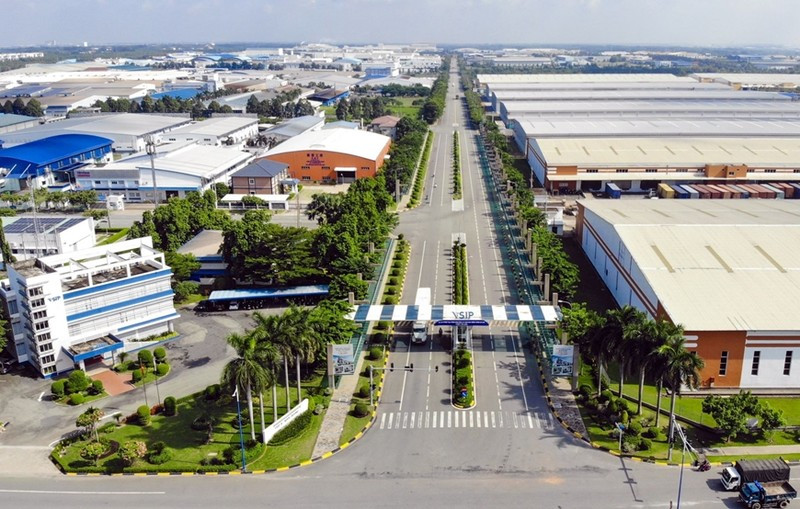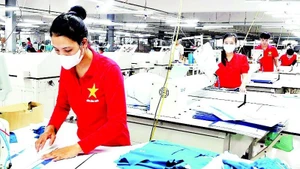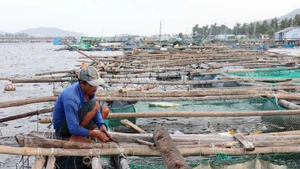In this new flow, Vietnam is one of the countries that made a strong commitment to green growth, towards sustainable development, having a specific action plan to fulfil the commitment.
Actions from businesses
In the story of green economic development, the Director of the Central Institute for Economic Management (CIEM) Tran Thi Hong Minh, mentioned the wood pellet industry. In 2022, Vietnam becomes the second largest exporter of wood pellets in the world and is expected to soon reach an export turnover of billions of USD, due to the sudden increase in import demand of EU countries, to make up for the shortfall of gas from Russia.
Raw materials for the production of wood pellets are mainly from small wood, branches, wood chips, and corn husks - by-products of plantation harvest and sources of wood shavings, wood sawdust, and wood chips purchased from workshops, and furniture processing facilities.
Therefore, the great opportunity of the wood pellet industry in expanding production and export also goes hand in hand with the development of the circular economy, when the by-products of one enterprise become production materials of another enterprise and create green consumer products.
The positive movement of the green economy also occurs in several other industries, such as the use of fashion fabrics by Vietnamese enterprises from coffee grounds, and the implementation of private initiatives in the construction of eco-industrial parks. A typical example is Nam Cau Kien Industrial Park (Hai Phong), where many investors are waiting in line to rent land.
Those are specific stories that show that Vietnamese businesses are starting to enter the green growth trajectory. This process needs to be further promoted from the State's supportive policies, suggested Minh.
According to Dr. Vo Tri Thanh, Director of the Institute for Brand and Competitiveness Strategy, many countries around the world have adopted and implemented green growth strategies. Green economy and green growth issues are also integrated into international agreements, cooperation and linkages.
But the requirement for greening the economy is not only reflected in the political commitment and policies of countries, but also comes from market pressure, such as green consumption trends, investment fields, creative economy, and new business models, such as circular economy, smart city, as well as the implementation of commitments and international integration under agreements of a new generation of free trade.
If in the past, businesses were worried that green production had to sacrifice profits and investment efficiency because of high costs, now, the market opportunity is reducing this trade-off.
Specifically, research by the Vietnam Confederation of Trade and Industry (VCCI) in 2021, shows that businesses that are certified with the Corporate Sustainability Index (CSI) have better resilience, even during the COVID-19 pandemic.
A study by Nielsen Vietnam also shows that brands with a commitment to "green" and "clean" have a relatively high growth rate, about 4% per year. For the food and beverage industry, the growth rate was 2.5-11.4% faster than the whole market.
International cooperation to increase resources
According to the World Bank's (WB) calculation, from now to 2040, Vietnam needs to invest approximately 368 billion USD, to build a climate-resilient and low-carbon economy, towards zero net emissions. Such large funding requires reallocating savings from the domestic private sector to climate-related projects, increasing savings from the public sector, and mobilizing external financial support.
To address the challenges posed by climate change, countries cannot go it alone.
With international partners, Vietnam still has a lot of potentials to promote green growth cooperation with Japan. Opportunities are opening up from the implementation of the Comprehensive and Progressive Agreement for Trans-Pacific Partnership (CPTPP) and areas with great potential for cooperation between the two countries, such as electrical and electronic equipment, wooden architecture, wind power, biomass power, sharing solar power, organic aquaculture, and organic farming.
According to the Central Institute for Economic Management (CIEM)'s proposal, Japan and Vietnam can consider four orientations to promote cooperation towards green growth in the coming time, including improving institutional capacity, regulations and policies; sustainable infrastructure development in Vietnam; cooperating to promote low-carbon, low-emission value chains and promote the development of international treaties, rules and international standards related to green growth.
Vietnamese stakeholders, especially small and medium enterprises, expect opportunities for cooperation and technology transfer from Japanese partners, but it is necessary to continue to improve the quality of service connection from the country, specifically digital and labour skills.
The need for financial resources is always a big challenge for the implementation of green growth commitments, but according to Nguyen Anh Duong, head of the CIEM's General Research Department, if there are clear regulations and policies on mobilizing green capital, the direction will expand.
According to the proposal of CIEM, it is necessary to develop a decree on a pilot mechanism for the development of the circular economy, to encourage pioneering enterprises, and in the long term, it is necessary to improve institutional capacity, regulations and policies related to green growth.
















